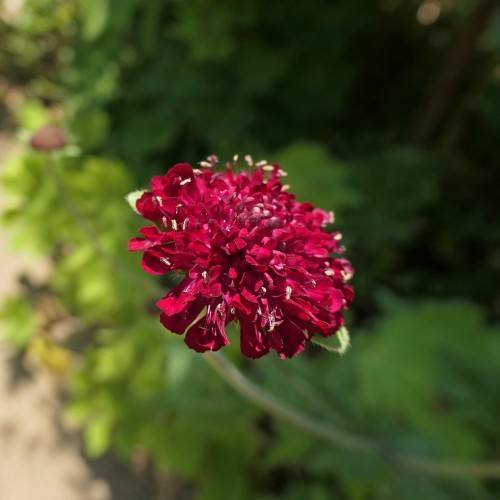
knautia
Knautia macedonica 'Thunder and Lightning'
Cycle:
Herbaceous Perennial
Watering:
Average
Hardiness Zone:
5 - 9
Flowers:
Flowers In Summer
Sun:
Full sun
Soil:
Rocky , gravelly , dry, Well-drained
Fruits:
Fruits In Summer Ready In Fall
Edible:
Yes
Leaf:
Yes
Growth Rate:
High
Maintenance:
Low
Salt Tolerant:
Yes
Care Level:
Medium
watering
Knautia macedonica 'Thunder and Lightning' should be watered regularly throughout the growing season, aiming for an average of 1-2 inches of water per week. Water deeply until the water runs out the drainage holes in the bottom of the pot. Allow the soil to dry slightly between watering, and if the plant is in a container, allow the top inch or 2 of the soil to dry out before watering again. In hotter weather, water more frequently as needed. In winter, reduce watering to every 1 or 2 weeks, as this plant is less active.
sunlight
Knautia macedonica 'Thunder and Lightning' is a hardy plant species that enjoys full sun. It does best with at least 5 hours of direct sunlight each day. Although it can tolerate some shade, Knautia macedonica 'Thunder and Lightning' prefers direct sun. To maintain its vibrant coloring and keep it blooming heavily, it needs the sunlight to produce adequate amounts of energy. The optimal time of day for this plant species is between 9am and 3pm, when the sun is the brightest.
pruning
Knautia macedonica 'Thunder and Lightning' should be pruned in early spring, when frost danger has passed. Pruning should be light to moderate, removing dead foliage and thinning out congested areas. This encourages bushier, more abundant flowering. As the flowers fade, the spent blooms should be removed to prevent the plant from setting seed and exhausting its energy. Cutting back too severely can damage the plant, so it's best to only remove a small amount of material and shape plants by pruning side shoots rather than shearing the top of the plant.
